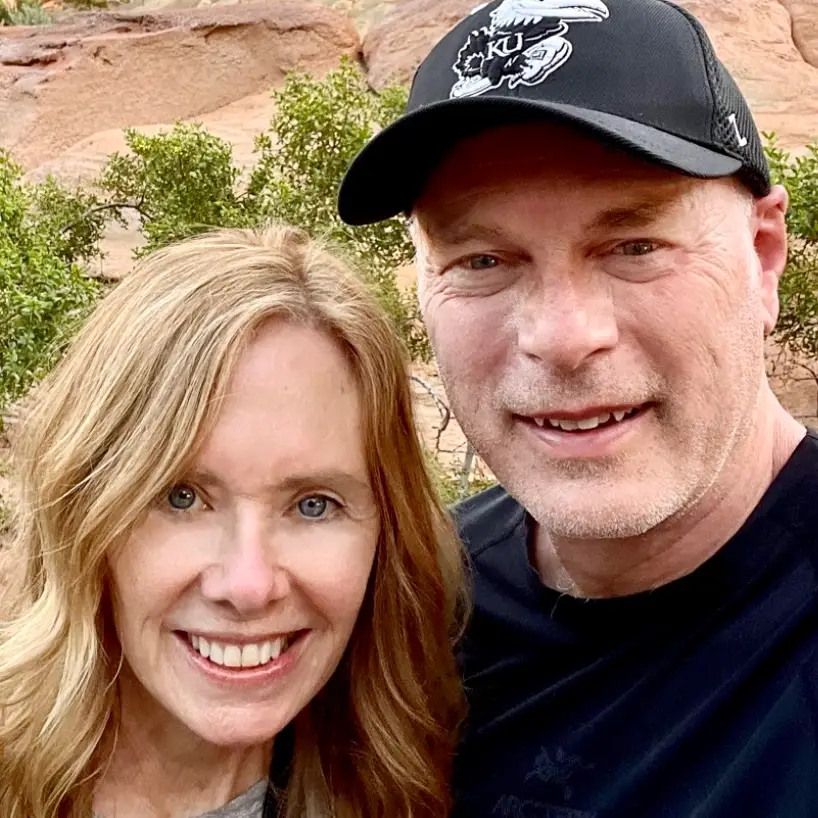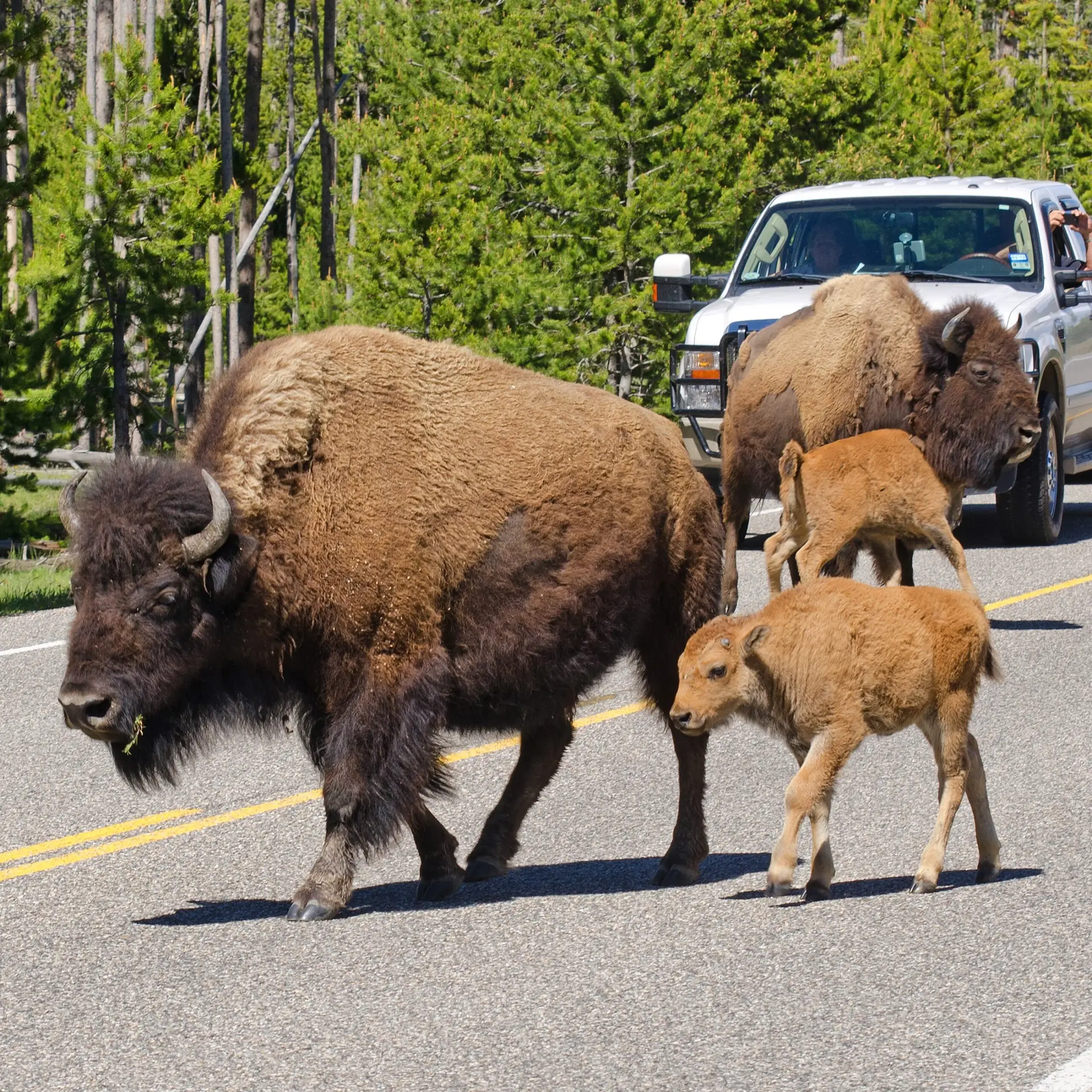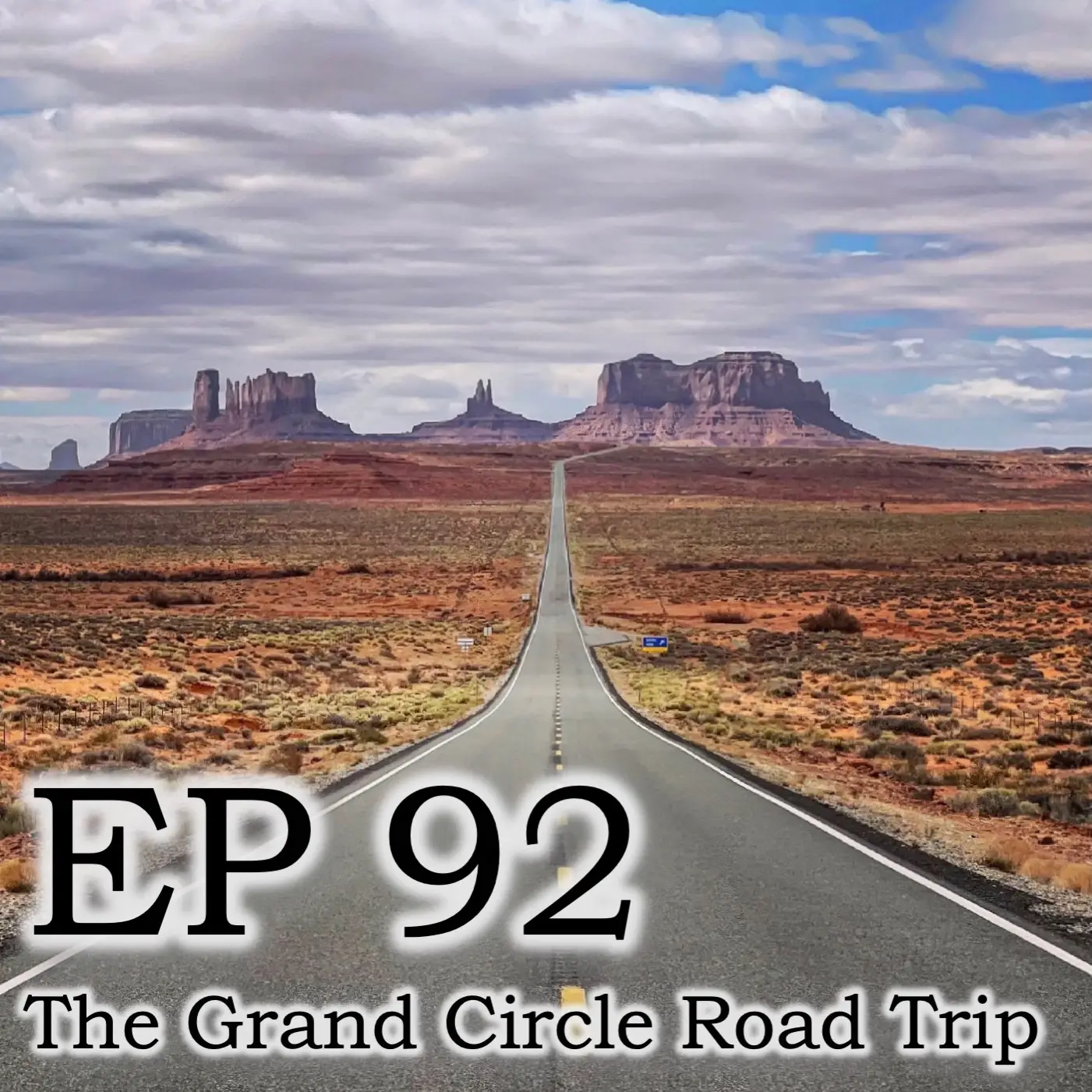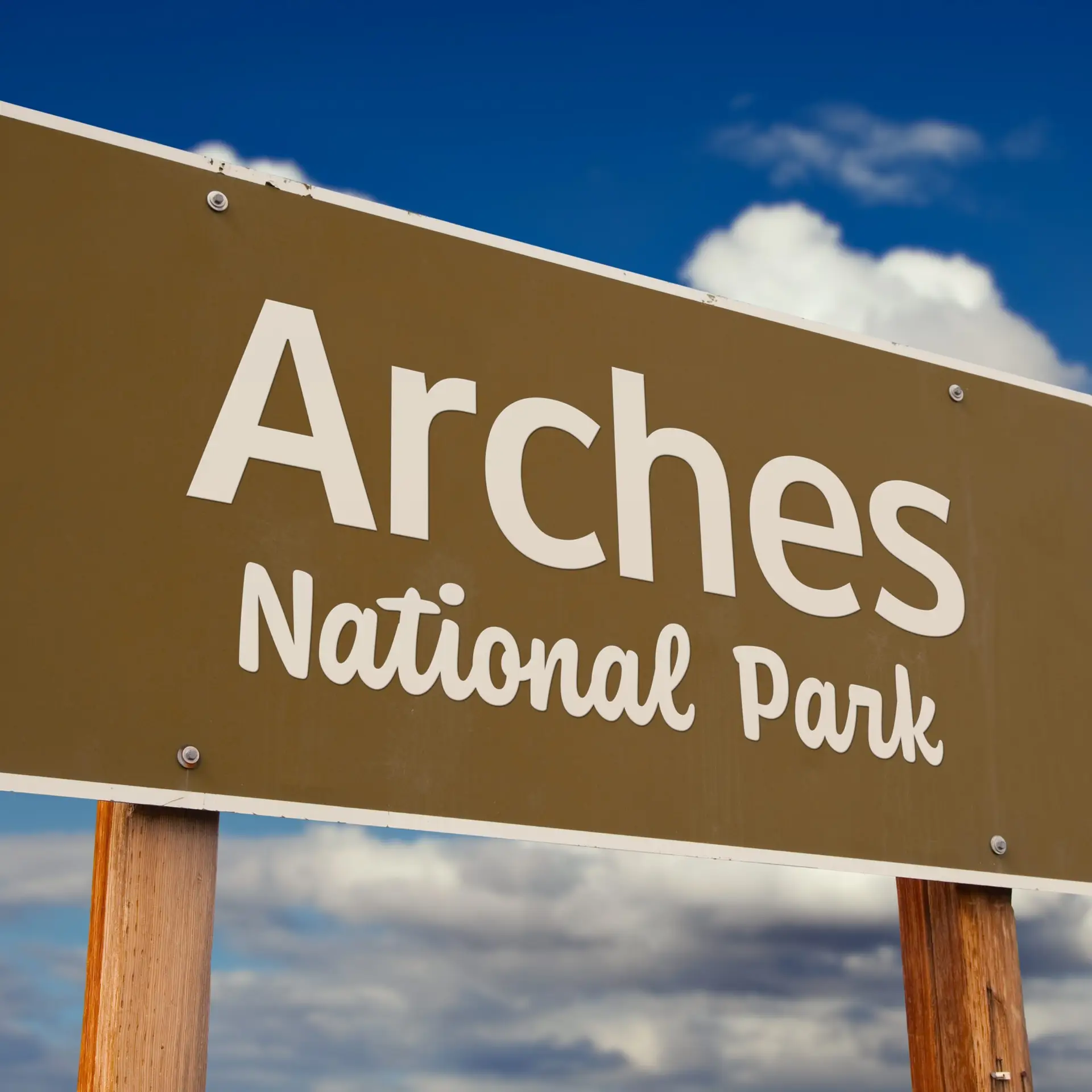Nothing says adventure like a road trip with a purpose. And few road trips capture the spirit of the American West quite like one in search of the majestic bison.
As part of our journey to see America’s amazing public lands, we explored some of the best places where these incredible animals still roam free. In this post, we’re sharing our eight favorite locations for viewing bison. These are places where your chances of spotting bison are not only high but also set against some of the most stunning backdrops in the West.
Listen to our companion podcast episode: The Great American Bison Road Trip
While these aren’t the only places to see bison (you can check out our guide to 19 bison-viewing spots here), each stop on this list offers a prime opportunity to witness these animals in their natural habitat. To learn about more public lands with bison, check out our post titled: 10 Unforgettable Places to See Bison in the American West.
Below, you’ll find a map showing the general routes between these destinations in colored highlights. Be sure to consult up-to-date driving resources before you head out, as weather and road conditions can influence the best path to take between destinations.
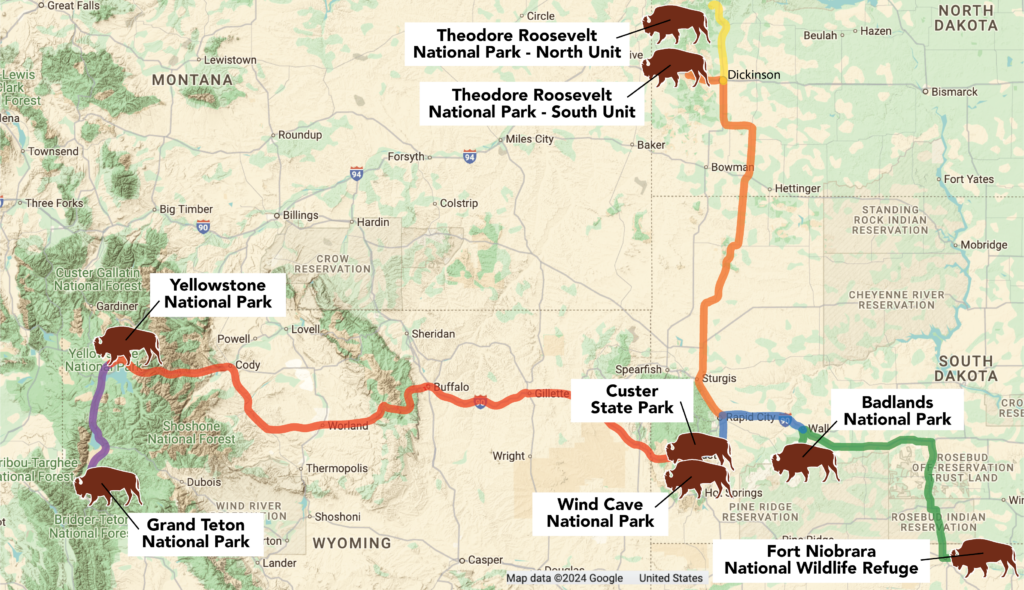
Yellowstone National Park
Yellowstone National Park has the largest free-range bison herd in America with a population of 3,000 to 6,000 animals. We’ve seen bison in nearly every corner of the park but one of our favorite spots for watching them is in the Lamar Valley.
Grand Teton National Park
Grand Teton National Park, just south of Yellowstone, is visited by a 700-head bison herd that splits their time between the park and the adjacent National Elk Refuge to the south. They tend to wander into the park during warmer months. We’ve seen them at times just east of the airport in the south end of the park and along Mormon Row by the Moulton Barns.
Custer State Park
Custer State Park in the Black Hills of South Dakota has an impressive herd of about 1,500 bison. They roam free throughout the park except for a week in the fall when the park rounds them up to check their health and cull the herd. While solitary males can be found alone or in very small groups anywhere in the park, most of the herd often spends their time in the south section of the park.
Wind Cave National Park
Wind Cave National Park shares a border with Custer State Park to the north. Even though these two public lands are right next to each other, they each have their own bison herds and are kept separated. With 400 to 450 bison in the park, you have a good chance of seeing them by the roads or in the grassy plains close by.
Badlands National Park
Badlands National Park is another ideal location for bison to roam free. The park’s 1,200 bison often frequent the area of the park by the Pinnacles Entrance, just south of Wall, SD, and to the west along the Sage Creek Rim Road.
Theodore Roosevelt National Park
The park’s South Unit has the larger herd with about 350 animals. Every time we visit this park, we find bison close to the road along Scenic Loop Drive. They also like to frequent areas near the Little Missouri River and the grassy plains to the northwest. You are also likely to see a few solitary males if you hike the North and South Petrified Forest Trails in the northwestern section of the park.
The North unit also has a herd of about 200 bison. As this unit is a bit smaller than the south, you are likely to see bison while driving through the park or hiking its many trails.
Fort Niobrara National Wildlife Refuge
Fort Niobrara National Wildlife Refuge is a thrill to visit in the spring as their 350 or so bison and newborn calves hang out in the grassy areas close to the visitor center. This area is the southern section of their winter range, where they stay until late May. After that, they are moved south to the summer range. Once they move to the summer range, finding them close to the park roads is much more difficult.
